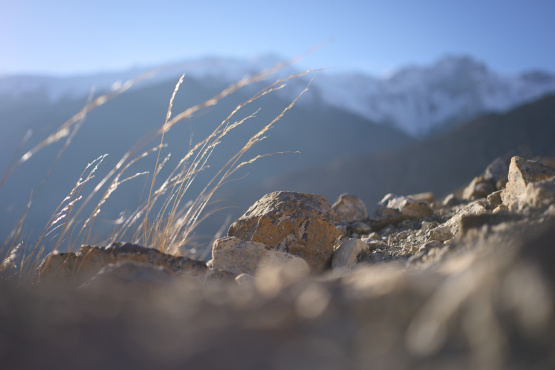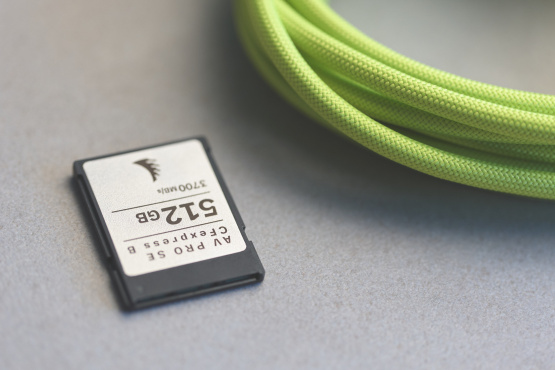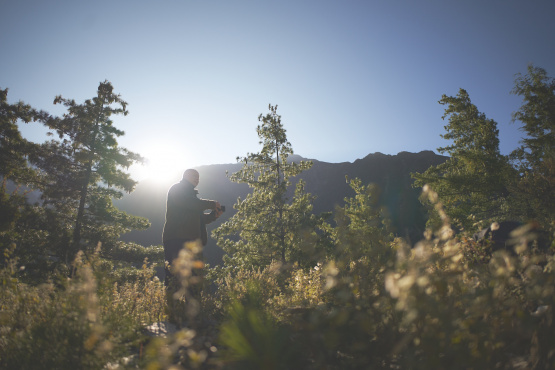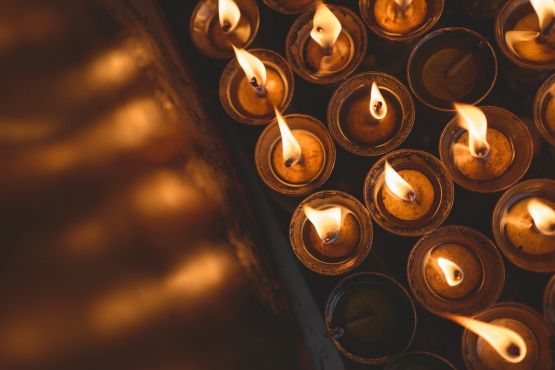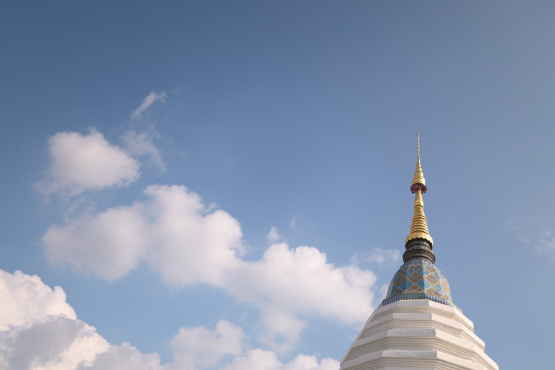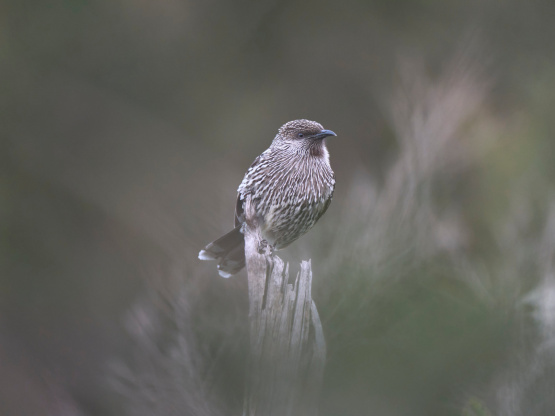BUTTERFLIES IN BHUTAN
I want to begin with the butterflies and how they have transformed how I see the Himalayas. These are such incredible and detailed creatures, and fascinating subjects to explore as a photographer. With the help of a macro lens, the miniature world that exists at our feet suddenly comes into view. Tiny little wings that flitter away in the distance are brought into focus and made larger than life.
Did you know that the scientific name for butterflies is “scaly wing”? That all makes a lot more sense once you get close enough to photograph at the macro level.
One of the joys of butterflies for me is how they become a doorway to slowing down your experience of nature. Sometimes I walk into an open field and all I see is grass. I squint to see if there flowers or other tiny details that my brain has learned to overlook. I stop and look. I start really observing the habitat, and I just look. My eyes soon begin to see things, lots of little things. I might notice what kind of flowers are poking through the grass, or the different kinds of grass, or the beetles and other bugs that call the fields home. I might notice strange caterpillars, that in a few weeks time will TRANSFORM into the very butterflies I hope to photograph.
And soon I start to notice the butterflies all around me. Little orange ones. Large black ones. Powder blue ones that flit about without stopping. Earthy brown ones that rest on trees and disappear into the forest. From a distance the colours can be hard to make out. Through a macro lens however, the joyous riot of colours are properly revealed.
I remember staying in a hotel just outside of Paro in Bhutan, and my friend came to visit and we stood outside in the garden talking. He was trying to describe a butterfly to me, a bright blue one, that he remembers from when he was a kid... but as an adult he cannot remember the last time he saw one. It was a surreal moment because I had just been photographing bright blue butterflies in this very garden. That morning I noticed that a few of them tended to come back to the same patch of flowers, just a few feet away from where we stood.
I scanned the meadow around us, and sure enough there he was. A little Azure Sapphire, displaying his fancy colours in the hope that the girls will notice. My friend looked at me in disbelief and joy, and then did his best to get a few shots with his phone.
MACRO MOOD
This is one of those times when a specific piece of camera gear can really make a difference to your photography. Not just the detail you get from a good macro lens, but the flexibility to compose and work light as well.
I have a friend who is a bug expert and her macro photography is all about maximum detail. She wants to see the features that identify one species from another. I do not. I want a beautiful photo that makes art with light and depth. So we each use macro gear in very different ways.
My style with macro is all about leaning into the bokeh, and the layers of texture taking place at the scale of a butterfly.
A simple flower becomes a rich highlight embraced by dreamy soft tones and layers of leaves and grass. Even better if there’s a butterfly hiding in there somewhere too. Shooting at F2.8 with a macro lens – plus a camera body with sensor stabilisation and excellent autofocus – means I don’t need flash or a tripod... which means I can compose freeform. I can look for moments where the light is creating composition. I can be guided by the light.
When I first started capturing butterflies I was so excited just to get that glimpse into their tiny world. Everything was new to my eyes. Often, I was rushing the moment. I wasn’t always working composition, but just firing off shots. But each time I stepped out to capture butterflies I became more aware of how they move, how one species behaves differently to another, how much time I have to grab a shot before they fly away, and how far I can push my luck when trying to get closer. Some species are more patient than others. Some individuals are more tolerant of my lens than others. The more patient I am with these opportunities, the more I began to transform my captures from photography into art.
Because my goal is to capture beautiful photos, not merely take photos of beautiful things. That’s the transformation I’m looking for when I’m chasing bugs with a camera. With the right lens and a generous amount of time, my creative vision begins to find form.
LIGHT ALWAYS THE LIGHT
One of the key differences in photographic style between myself and my friend the bug expert is how we use light. It’s not just that I need less light – working at F2.8 and letting the ISO of the camera boost my shutter speed – But I get to enjoy more variety in my light. I am seeking out those moments where the light is doing something interesting or something complex. That’s where the magic happens for me. I don’t want ordinary light, and I am searching for light coming through the lens in ways I did not expect. I love to let the light surprise me!
Cameras don’t see subjects, they see light. So the easiest way to transform a composition with your creative eye is to work with the light, not against it.
The way light moves through a scene is the most fundamental way I know to transform a capture. For example, I can’t imagine ever wanting to shoot with light flat behind me. I want to shoot across the light, or into it. Or a combination of both. I want the flare to hit my lens and paint in a little of the foreground. I want bokeh to pop along the edge of flowers in the background. I want the chaos of natural sunlight and all the opportunities it brings.
CURATION
Light transforms the image, but so does the photographer. I know this sounds painfully obvious, but stop and think about what THAT means for a moment. WE hold the camera in our hands, and WE decide what is worth capturing and what is not. WE decide what the story is. We get to decide whether to transform that moment into a celebration of grandeur, or a reflection of tragedy. WE are the narrator.
We are still making those choices long after the capture – we make similar choices when we curate images into a collection and share them. The way we present an image is critical to how it is received – this is true when curating for a gallery, for a book or even social media. Bringing the right series of images together can build your narrative. If a picture tells a thousand words, a collection of images can reveal the whole story. Or at least, the version of the story you wish to tell!
My last exhibition was just before Covid, a project funded by the LUMIX brand. I wanted to tell a story about conservation in the Himalayas, and they wanted to launch a new camera. So we made a deal to help each other. My original proposal underwent a big transformation however was – they had invited a celebrity to join me in Bhutan for the shoot. My task now was to bring together two very different photographic perspectives, on two very different camera systems – micro four thirds versus full frame – and somehow tell a coherent story.
I took Australian TV personality Ray Martin to Bhutan for 10 days, and introduced him to why I love this part of the world. He was an excellent companion in fact. He’s a sharp fellow, a pleasant fellow, and just good company. At the time Ray didn’t do much in the way processing photos, so after our travels together he came down to Melbourne with a collection of SD cards... and we tried to assemble an exhibition.
My original concept was long lost by this stage! I had started with grand ideas of portraits of people displayed alongside portraits of birds – and connecting the stories between those individuals and their experiences in the Himalayan wilderness. A different narrative came out of the photos however. As I dug through Ray’s images I looked for the journalistic eye behind his shots, and eventually settled on a formula. Fair to say, Ray was a little put out that I didn’t use more of his photos in the final exhibition. Sometimes you just have to follow the story to where it takes you. Either it’s there in the photos, or it’s not.
When it comes to curating a gallery set, or a book, I usually advise to people, “DON’T MIX COLOUR WITH B+W”... For this collection I ended up mixing COLOUR WITH B+W!
Every framed print on the walls was a square, 30” by 30”. Most of those prints were broken into quads – Four squares within the square, roughly 15” x 15” each. With a few exceptions, the birds were printed in colour, while the rest of the story was in B+W. Because the foundation of this exhibition was always about the birds, and the stories revolve around how the people of Bhutan relate to those birds. That was my narrative. That was what we shot for 10 days in Bhutan.
I wanted to transform my bird photos into something more. I wanted to bring in the stories behind the photos. For example, the park rangers who have never seen a Parrotbill, until I showed them one I photographed a few months earlier... In THEIR patch of forest. This was a bird the park rangers didn’t know existed! Which is exactly the power of photography and the message I wanted to share. We can use photography to raise awareness of our wilderness, so everyone understands better why we need to preserve it.
The stories are what mattered for this exhibition. I wanted to tell the story of the park rangers. I wanted to portray the contrast between domestic animals in villages versus birds in the wild. I wanted to show where the habitat of humans meets the habitat of wildlife, and how the two are not always in conflict.
What we ended up with was a very different exhibition to what I had originally planned. But that’s what happens when you follow the story to discover where it takes you. That makes for an exhibition experience that is most genuine for the audience, and most rewarding for the photographer.
https://ewenbell.com/bifb
LENS ENVY
Two things have transformed MY photography over the years. The first was buying a very fast wide angle lens, and the second was having time to follow my creative path.
I’ve talked specifically about TIME before, so I’ll pop up a link below to that video as well. The short version is that the best way to get better at photography is to spend more time doing it. Of course what you mean by “BEING BETTER AT PHOTOGRAPHY” can mean different things to different people, and just defining what kind of photographer you want to be is a big step towards that TRANSFORMATION. Once you know where you want your journey to take you, the only reasonable step left is to make time to spend making that journey.
So you need to invest TIME to be your best, but you also need some gear. You be a photographer if you don’t have a camera. There is a tricky paradox when it comes to acquiring the gear you need for YOUR journey. How do you learn what gear you need if you haven’t had a chance to try the gear? How do you know if your current gear is holding you back at all? How do you know which lens is the one that will suddenly unlock all the magic? Is it really possible for one lens to suddenly change everything?
I know this wont apply to everyone out there, but for me it absolutely did. I have a policy of buying myself one new lens every year – not because I need to own dozens of lenses, but purely as a treat. I want to have a chance to try out lenses that are outside my comfort zone precisely because that is where you find new horizons and new opportunities. My other reasoning is, if the lens doesn’t spark joy for me after a year or so then I can always sell it again. This was how I came to purchase a 24mm F1.4 for my old DSLR.
I already knew I liked composition with a fast prime lens. 50mm F1.2 was my daily drive. Taking that same approach but stepping back to 24mm was a game changer for me. It TRANSFORMED how I looked at shooting wide. Suddenly I could work DEPTH into a much wider scene, while still working focus and bokeh. For me, so many moments that were nice at 50mm became powerful at 24mm. I was capturing so much more of the story.
I liked it so much that I quickly realised I wouldn’t mind shooting F1.4 with an even wider focal length! I covered that in another video too, so I’ll pop up that link as well.
Having the opportunity to look at my photography with a fast AND wide lens absolutely transformed my creative path, and my earning potential. But having the time to take advantage of that opportunity was equally important. Once you’ve found right bit of magic sauce to work into your craft, you need to get out there and explore your boundaries. Gear is handy, but spending the TIME is essential.
INFLUENTIAL
The internet has absolutely TRANSFORMED the world I live in, and for me it came along at just the right time to make a career change. Digital cameras, websites and eventually social media all happened at a time in my life that allowed me to step away from a day job and immerse myself into a creative freelance career.
If we were all still shooting film I doubt I would ever have had the resources start a new career. The investment required to shoot film back in those days was a huge hurdle to learning. Digital consumption of photography has also brought about a rise in demand for quality photography, and THAT has fuelled an amazing opportunity for someone like me to find paid work capturing beautiful images.
Ironically, all these years later, I think it’s social media that is doing the most damage to photography as an art. The speed and pace of how people “digest” images on Instagram these days is destroying the value of the art itself. Instead of reflecting and digesting the power of a photo, we click then flick through a torrent of non-stop imagery – and increasingly that deluge of pictures are fake or AI generated – they aren’t real in the first place. Once the flood has passed, your photos simply sink to the bottom of the ocean with all the other trash.
Engagement on social media is now measured in nano seconds instead of minutes. That’s if the algorithm even lets your image be seen. Photographs are not deemed to have the impact of shouty reels and shorts. Where once we walked around a gallery and contemplated the work of a fine photographer, today we get assaulted with attention seeking videos from a never ending pipeline of CONTENT.
In the absence of magazines and galleries, the experience of consuming photography has been transformed into click bait.
TRANSFORM
What I’ve been going through in recent years is a need to transform my own experience of photography. It’s the reason I started this YouTube channel, to create a way to share my photos as an experience for others to enjoy.
Actually printing out your photos and seeing them inked on paper is one of the most transformative moments I can think of. We do this on a couple of my workshops, and it’s pure magic seeing someone hold a giant print of a photo that they captured just a few hours before. Looking deep into the texture of the paper, absorbing the rich tones and hues, and marvelling at the detail and nuance within a large print is a powerful moment. In that moment we see someone understand just what they are capable of. They are empowered by a simple print.
What interests me most about MENTORING photographers is observing what exactly ends up transforming someone’s creativity, or maybe even their whole career. I love it when we get to witness these moments first hand and get to see that spark ignite in their eyes. It’s really something.
ON THE WALLS
Creating an exhibition is a deeply personal and emotional challenge. The prints that end up hanging on the wall are not merely copies of a digital file, they are much more than that. They have been made flesh, and they take on personality for me. They are unique and irreplaceable. They are the culmination of months, maybe years, of intense work and creative energy. It’s as if they have a soul, born of my drive to create and share what makes this world beautiful. In the act of printing we transform pixels into something tangible and valuable. They are our expression and ideas made real, in a way that no Instagram post can ever touch.
Can you imagine taking all that effort and work, and say just throwing it all in a dumpster? Unlike Instagram, we’d never do that a beautiful framed print that was the centre of an exhibition. Hanging prints on a wall transforms all that effort and emotion into something wonderful. Like a butterfly awakening from it’s pupa, it takes flight.
I don’t know what the future is for social media. There was a time when the online space felt pretty real, and sharing your curated work on Facebook was rewarding. I no longer feel that way. Most social media platforms are just using your hard work and effort to sell ads that don’t work. YOU are the product, not Instagram. YouTube is not so different of course, but if you’ve stuck around to this stage of my video then you’ve ALREADY had more time to contemplate my photography (and my ideas) than you would from a decade of my Instagram posts.
Ironically, it is precisely because the world of printed photographs has become less common that such an experience is ever more important. If you get a chance to exhibit and hang your prints on the wall, I recommend you do just that. Do it with your camera club. Do it with your local cafe. Do it with an art fair or photo festival. Exhibiting not an easy path. It takes time, it takes money and it takes guts. You’re putting your soul on display in the process, and not everyone will see value in what you’re doing. It is confronting, and without doubt you will learn a lot about yourself in the process.
And that is the point really. Curating and sharing your work in public MAY OR MAY NOT transform the perception of an audience, but is absolutely will transform you.
- Ewen
Why 24mm isn't wide enough for me anymore:
Why "time" is the most powerful tool you can apply to your photography:
Read about my butterfly obsession in Bhutan during the summer of 2023:
https://ewenbell.com/blog/Butterflies_in_Bhutan

Keep Reading
Join Ewen's newsletter for monthly updates on new photography articles and tour offers...Subscribe Here



